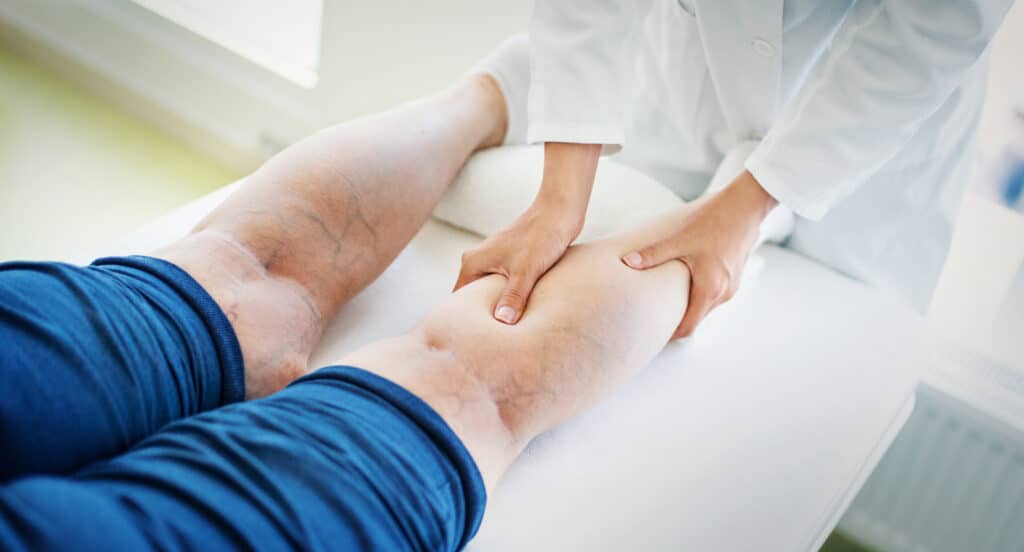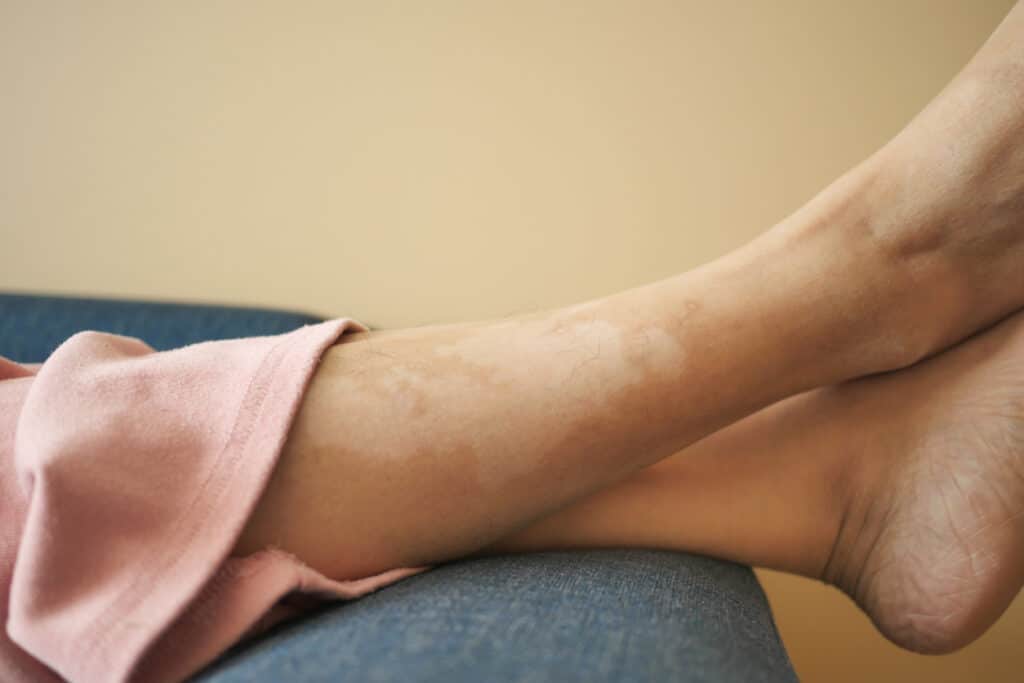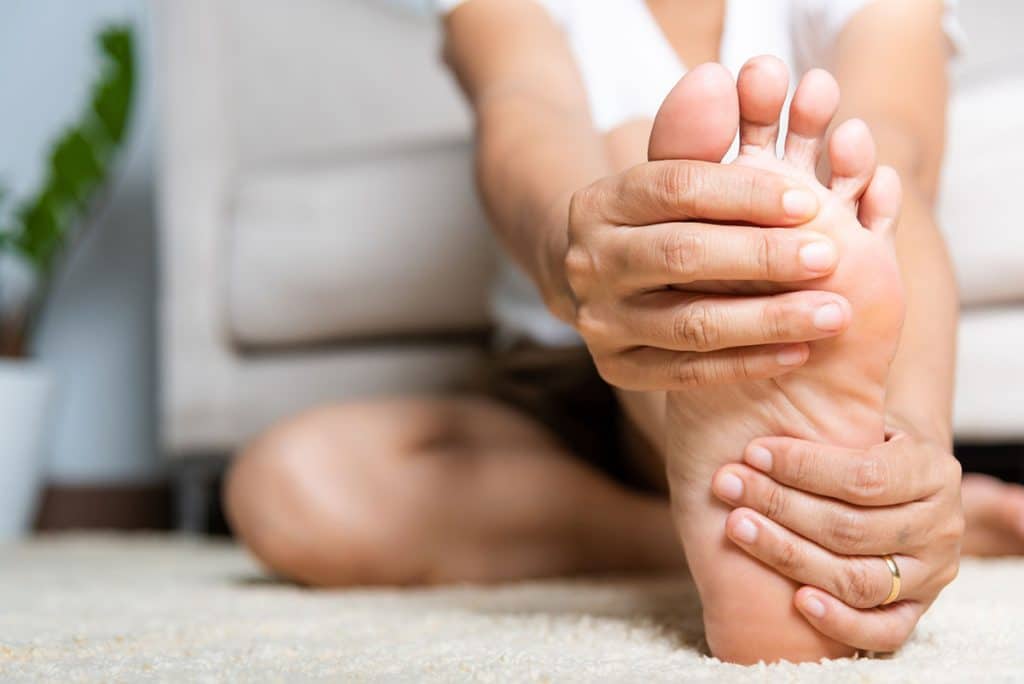Peripheral Arterial Disease (PAD) is a condition characterized by the narrowing or blockage of arteries that supply blood to the legs and feet. This restricted blood flow can lead to a range of symptoms, including leg swelling.
Peripheral arterial disease (PAD) affects millions of people in the United States, including an estimated 8.5 million adults over the age of 40. It’s a condition that occurs when plaque builds up in the arteries that carry blood to the legs and feet. When the arteries are blocked, blood flow is reduced, and this can cause a range of symptoms, including leg swelling.
In this article, we’ll look at the link between PAD and leg swelling, its causes, symptoms, and treatment options.
What Causes Leg Swelling in People With PAD?
The most common cause of peripheral vascular disease is atherosclerosis; this is when plaque builds up inside the wall of your blood vessels. The buildup of plaque in your blood vessels reduces the amount of blood that flows to your limbs. This lowers the nutrients and oxygen that are available to tissue in our legs. These can include pain, tingling, numbness, cramping, and even non-healing wounds and ulcers.
In some cases, leg swelling can also occur. This is because the blockage prevents blood from flowing out of the legs and feet effectively, which can cause fluid to accumulate and result in swelling.
A very valid question that many patients ask is if swelling of the legs is dangerous. As indicated earlier, swollen legs may be due to standing too long or even sitting too long, but the truth is that swollen legs can be a huge indicator of something much more serious such as vascular disease. Not having proper blood flow to your legs is very serious and can lead to more problems and issues. Here are some risk factors that may cause peripheral vascular disease.
Risk Factors of Peripheral Vascular Disease (PVD)
- High blood pressure
- Diabetes
- Coronary artery disease
- Overweight
- Smoking and using other tobacco products
- High cholesterol
- Physical inactivity
- Aging
Symptoms of Peripheral Arterial Disease
Many people with early stages of PAD don’t experience any symptoms, but as the disease progresses, the following symptoms can occur:
- Leg pain (claudication): Painful cramping or tightness in the muscles of the legs, especially during exercise or physical activity.
- Numbness or tingling: A “pins and needles” sensation in the toes or feet, or a feeling of weakness or heaviness in the legs.
- Non-healing sores: Wounds or ulcers on the feet or legs that don’t heal or are slow to heal.
- Shiny skin and hair loss: The skin on the legs may become shiny, and the hair may fall out.
- Cold feet or legs: The legs or feet may feel cold, especially in comparison to the rest of the body.
- Weak pulse: The pulse in the legs or feet may feel weak or non-existent.
If you or a loved one experiences any of these symptoms, schedule an appointment with a physician as soon as possible.
Treatment Options for Peripheral Arterial Disease and Leg Swelling
There are several treatment options available for peripheral arterial disease and leg swelling, including both surgical and nonsurgical options.
Lifestyle changes
In many cases, lifestyle changes can be effective in managing PAD. Modifying one’s diet, quitting smoking, exercising regularly, and losing weight can all help restore healthy blood flow to the legs.
Medications
There are several medications that can be prescribed for peripheral arterial disease, depending on the severity of the condition. Some medications can help manage symptoms, while others work to prevent blood clots and prevent further damage to the arteries.
These medications may include:
- Antiplatelet drugs
- Blood thinners
- Cholesterol-lowering drugs
- High blood pressure medications
Minimally-invasive procedures
In more severe cases of PAD, minimally invasive procedures may be necessary to restore blood flow to the legs.
These procedures may include:
- Angioplasty
- Stenting
- Atherectomy
- Laser Angioplasty
Surgery
Surgery may be necessary in rare cases to treat severe cases of PAD and leg swelling. The goal of the procedure is to bypass the blocked artery and restore blood flow to the legs. Surgery may involve a graft made from a vein or synthetic material.
Visit Coastal Vascular Center
If you’re experiencing leg swelling and other symptoms of peripheral arterial disease, it’s important to schedule an appointment with your healthcare provider as soon as possible. At Coastal Vascular Center, we specialize in diagnosing and treating peripheral arterial disease and other vascular conditions. With personalized treatment options, our expert team can help you manage your symptoms and improve your overall health and well-being.




